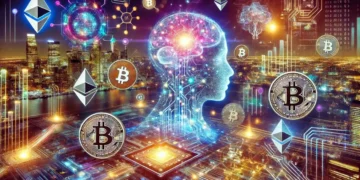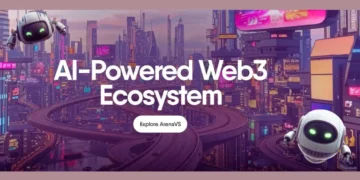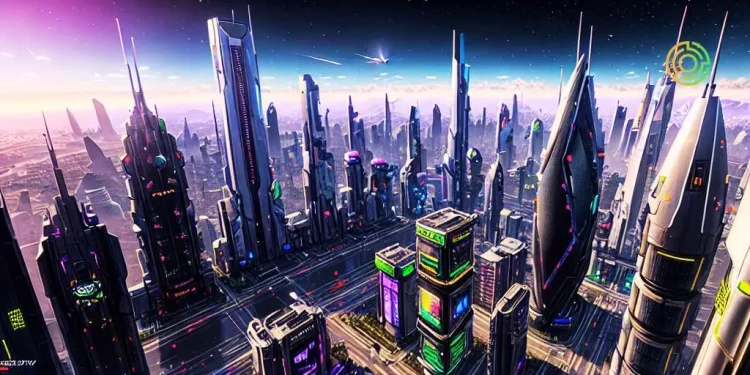The metaverse represents one of the most transformational emerging technologies today. This expansive digital world promises to revolutionize everything from social connection to commerce and entertainment. Yet much mystery still surrounds what the metaverse actually comprises under the hype.
As a technology copywriter, I provide an in-depth look at the core technical, economic, and social foundations underpinning the metaverse’s development. This comprehensive guide examines the key innovations powering this vision of an immersive virtual future.
What Does the Metaverse Mean?
There is no single unified definition of what constitutes the metaverse. In simple terms, it refers to persistent 3D virtual worlds where users interact through digital avatars. Meta CEO Mark Zuckerberg describes it as an embodied version of the internet.
The metaverse may materialize as a singular interconnected environment or separate virtual worlds accessed through “digital bridges.” Users will digitize their identity via avatars to fully inhabit these virtual societies.
Emerging technologies like virtual reality (VR), augmented reality (AR), artificial intelligence (AI), blockchain, robotics, and more will enable these expansive cyberspaces. The metaverse promises to revolutionize social connection, work, commerce, education, and entertainment.
Why the Metaverse Matters
Many question the hype around a concept that seems pulled from science fiction. But the development of open, persistent 3D virtual worlds stands to unlock new horizons across many facets of human life.
Virtual economies within metaverse environments will foster new markets and commercial activity. Users may work virtually overseas and earn income through metaverse jobs. Real world services from finance to education can be delivered through virtual campuses at global scale.
For businesses, the metaverse enables building engaging branded spaces and offering novel shopping experiences that drive value. As virtual and physical lives converge, the metaverse promises to reshape society itself.
Tech Giants Racing to Build the Metaverse
Realizing such an ambitious vision requires monumental capital and technical prowess. Accordingly, major technology firms are pouring billions into constructing their own metaverse platforms.
Meta’s Facebook aims to evolve into a metaverse company, while Microsoft, Nvidia, and Roblox are developing massive web-based virtual worlds. In China, tech giants like Tencent, Alibaba, and ByteDance are also charging ahead with competing metaverses.
Decentralized blockchain metaverses like The Sandbox and Decentraland offer user-governed virtual worlds built on the open Ethereum network. The race is on to make the metaverse an immersive extension of daily life.
Virtual Economies Powered by Cryptocurrency
The metaverse enables new avenues of trade and commerce within virtual settings. To support these digital transactions, fiat currencies face limitations. Crypto’s decentralized nature makes it ideal for facilitating economic flows without centralized intermediaries.
Widely adopted cryptocurrencies like Bitcoin and Ethereum can exchange seamlessly for virtual goods and services across borders, unlike government money. Stablecoins maintain purchasing power stability while enabling blockchain benefits.
Crypto’s open financial infrastructure allows equal, global participation in metaverse economies, unlocking new markets and wealth creation opportunities for the world’s unbanked billions.
Ownership and Exchange Via NFTs and Blockchain
Non-fungible tokens (NFTs) underpinned by blockchain provide digital ownership representations and transparent exchange of unique metaverse assets. Users can securely trade digital art, real estate, wearables, avatars, and more.
NFTs prove provenance and authenticity of one-of-a-kind virtual objects. Combined with cryptocurrency payments, blockchain facilitates entire metaverse economies from asset issuance to transactions.
Open blockchain ledgers bring transparency and auditability to commerce – tamperproof ownership records build trust. NFTs make digital ownership real, underpinning the value layer of metaverse worlds.
Investing in the Future of the Metaverse
For those seeking to capitalize on this mega-trend early, various investment avenues exist beyond directly building platforms. Publicly traded stocks of metaverse tech companies offer exposure to growth.
Exchange traded funds (ETFs) bundle stocks from Nvidia, Unity, and Roblox to provide diversified metaverse market access. Cryptocurrencies used in blockchain metaverses like Decentraland’s MANA are another option.
As the metaverse evolves, new asset classes like metaverse real estate and NFTs will open investment opportunities granting digital property rights.
Crypto Cities Offer Virtual Sanctuary
Fully fledged cities are emerging within blockchain-based metaverse platforms like Decentraland. These allow experimenting with futuristic urban design and virtual community building.
In Decentraland’s sprawling pixelated metropolis, over 90,000 plots of blockchain-verified virtual land sell for thousands each. Avatars inhabit 3D buildings, explore districts, and congregate at virtual venues.
While basic now, visions for photorealistic, AI-powered simulated cities are advancing rapidly. Metaverse cities provide blank canvases for reimagining human habitats without physical constraints.
The Metaverse in Its Current Early Form
Make no mistake – despite ballooning investment, the open, interoperable metaverse envisioned is still years if not decades away. Present platforms represent very primitive glimpses of the concept.
Decentraland and The Sandbox stand out for enabling user-driven economies and avatars. Billions in virtual real estate trades still rely on blocky graphics and limited social experiences.
While basic, these early metaverses set the stage for coming exponential technological change to make them indistinguishable from reality. Their evolution will depend on how these foundations advance.
Privacy and Safety Concerns Loom
Such a radical social paradigm shift does not come without risks and pitfalls. Most concerning is the potential for rampant data exploitation, security flaws, and mental health consequences.
Metaverse engineers must prioritize privacy and ethics to avoid the moderation and harassment problems plaguing today’s social media. Addiction and excessive immersion also require protections, especially for children.
If engineered responsibly with users’ well-being in mind, the metaverse can minimize risks. But its success hinges on developing sound frameworks for rights and safety.
The Role of Law and Regulation Remains Unclear
Overseeing economic flows and social governance in this new digital territory will require adapting legal frameworks for the internet age. However, most governments lag in providing policy guidance.
Virtual world commerce, financial management, speech, rights, privacy, and IP in the metaverse all need defined regulatory scope. But uncertainty persists around balancing openness and risks.
Navigating lawmaking for borderless blockchain networks and jurisdictions between virtual and physical will challenge outdated models. Until governments address this, uncertainties hamper full metaverse maturation.
Get the ultimate guide for understanding the metaverse and its importance CLICK HERE!
Conclusion
The metaverse constitutes a complex convergence of numerous bleeding-edge technologies evolving in parallel – VR, AI, blockchain, robotics, and more. While the full vision remains years off, foundations are actively coming together.
Harnessing these technologies to enable persistent digital worlds marks a new phase of the internet’s evolution. But realizing an open metaverse with human flourishing at its core requires overcoming towering technical and social challenges.
How the metaverse takes shape depends on the creative builders laying the groundwork today. The choices they make now in designing economic incentives, governance, rights, AI, identity, and more will resonate for decades. This makes thoughtful, ethical metaverse engineering imperative.
Powerful emerging tools can either empower humanity or dehumanize society. As architects of the metaverse balance promise and peril, they pave the path to this virtual frontier yet to come.
FAQs
How will identity work in the metaverse?
Digital avatars will represent users in virtual worlds. Persistent identities and reputation can carry across linked metaverse environments. Blockchain-verified decentralization prevents identity loss.
What role will artificial intelligence play?
AI will enable automated design, realistic graphics, natural language NPC interactions, personalized experiences, robust simulations, and moderation at scale.
How will physical world assets translate into the metaverse?
Through digital twins and IoT connectivity, real-world objects can be reproduced virtually and seamlessly interact through a virtual interface layer.
What does interoperability mean for the metaverse?
It refers to the ability to freely move avatars, identities, currency, possessions, and data between different metaverse platforms and applications. This is key for preventing fragmentation.
Could governments shut down metaverses?
Likely not decentralized metaverses operating across peer-to-peer networks with no central off switch. But regulations could heavily constrain aspects like economics and speech depending on jurisdiction.
Disclaimer: Some of the links on this page could be affiliate links, where I earn a commission if you make a purchase via my link. This helps me continue to create the free content that I put out.
Follow us on our social networks and keep up to date with everything that happens in the Metaverse!
Twitter Linkedin Facebook Telegram Instagram Google News Amazon Store










































